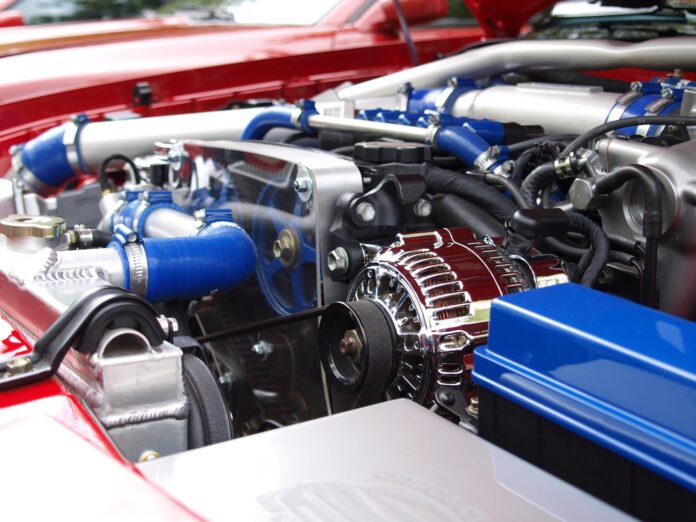Every industry keeps evolving as the world evolves and the automotive industry is not an exception. The growth of this industry over the past few decades is evident, as it has moved from steam-powered vehicles to gas-powered, which we use today and also electric-powered that is now on the rise.
It has also moved from no lights to electric headlights and today, we have LED Headlights that are unarguably the best. According to LedLightStreet, the automotive sector is bound to constantly change, as long as the world keeps evolving and coming up with technological advancements and new innovations.
While these changes come with their challenges, newer companies seem to be managing them better. For example, Tesla is gradually making progress and stands ahead of others in the electric vehicle space. However, more automotive companies are also catching up with the new developments and in this article, we explain some of the major trends transforming the automotive industry today.
1. Electrified
This is one of the latest technologies in the automotive industry. The world is gradually drifting from gas-powered vehicles to electrified vehicles and by 2030, the number of electric cars in the world is estimated to be up to 125 million. This benefits the world in so many ways, as these cars are quieter, run smoothly, and emit low levels of harmful substances, such as CO2.
There is also no need for fuel tanks or exhaust pipes, which helps reduce running and maintenance costs. As more electric cars are made, the world will have to adjust to the system, and this could mean replacing gas stations with electric grids or renewable sources of energy, such as the solar system. Electric cars are the future of the automotive industry.
2. Autonomous

Also known as self-driving or robotic cars, autonomous cars are capable of sensing their environment and moving with little or no human input. This is all thanks to technological advancements over the years, as artificial intelligence, machine learning, and deep neural networks are combined to make this work effectively.
These cars are already in existence and more will be manufactured in the coming years. This has lots of advantages, including helping out when you’re too tired to drive or in cases where the driver has a disability that is preventing them from driving.
3. Shared
Car-sharing facilities are now on the rise, especially in big cities, which helps reduce the cost of mobility by a significant amount. As new technologically advanced cars are introduced, the car-sharing option would be viable to more people and cities. This would make it easier to search for shared vehicles wherever and whenever.
4. Connected

A connected car communicates with other systems outside the car via the Internet. There are sensors and on-board computers inside the car that picks signals from other cars, houses, and infrastructure outside. The first connected car was launched in 1996 and it is still evolving as technology improves.
Connected cars are safe, efficient, cost-effective, accessible for disabled people, and are able to collect data from different sources. There is so much more to expect from connected cars in the future as we explore more of technology.
5. Yearly Updated
The range of models produced in the automotive industry will be updated yearly to adapt to the latest technological advancements. This will also help ensure they are up to standard and meet the requirements of shared fleet buyers. As the four trends- Electrified, Autonomous, Shared, Connected- are improved, there will also be improved innovation to integrate the latest hardware and software developments and keep everything up to date.
For the longest time, vehicles have been made to be sold for up to five years and more but with the introduction of yearly updates, that is about to change. According to the PWC study, the short innovation cycles will be primarily through regular upgrades of shared vehicles, so customers don’t have to worry about buying new vehicles yearly.
6. Digitization

The automotive industry keeps progressing and digitization has strengthened this progress, as it moves the manufacturing of cars away from manual labor. This has not only yielded a more effective result but has also resulted in production and cost efficiencies.
The digitalization and advancements in technology is expected to increase the automotive industry investments to $82 billion in 2024. This will continue to impact the entire automotive value chain, as there will be increased demands for new innovations that will shape the industry and provide improved customer experience.
7. Consumer Mobility Behavior
As the trends in the automotive industry continue to improve, customer mobility behavior is also changing. Over the years, consumers have had their preferences in cars changed, as they desire more features and better updates alongside technological breakthroughs. Cars are used for various purposes and have made life easier for everyone.
Due to this constant mobility change, there has been a decline of the driver’s license in the United States, as more people gear towards the car-sharing option. This makes it more evident that these trends are here to stay and up to one out of ten new cars sold in 2030 may likely be a shared vehicle.
Effects of these trends on the Automotive Industry

These trends would have a progressive effect on the automotive industry as it transforms from what the world has been used to into something better in a technologically advanced world. The trends, changes, and possibilities will have an intriguing effect on the automotive industry, thereby leading to a safer, more efficient, and more comfortable experience. This will have far-reaching consequences for the industry, as elementary structures and attitudes adjust to accommodate the developments in the next decade.
Conclusion
Trends in the automotive industry won’t stop any time soon and these trends are constantly evolving. As more cars are produced, newly improved features are added to allow more benefits for users and for the environment.
The emerging technologies are also creating new experiences for automakers, as they manage all the technological and automotive industry trends and manufacturing changes. The next decade is about to be a game-changer for the automotive industry.





![Calgary’s Hottest Neighborhoods for Luxury Homebuyers [2024]](https://thewashingtonote.com/wp-content/uploads/2024/04/Calgary-324x160.png)



